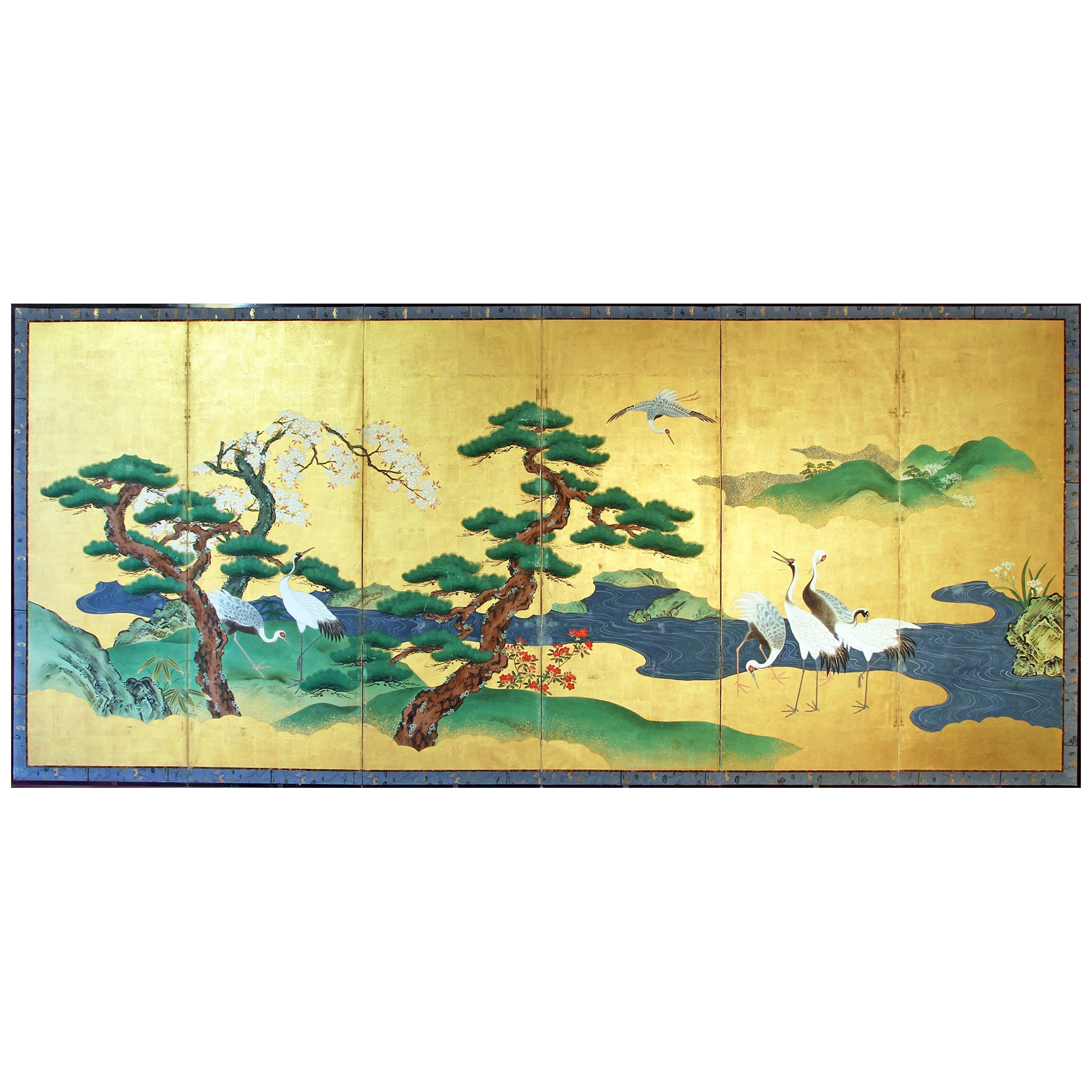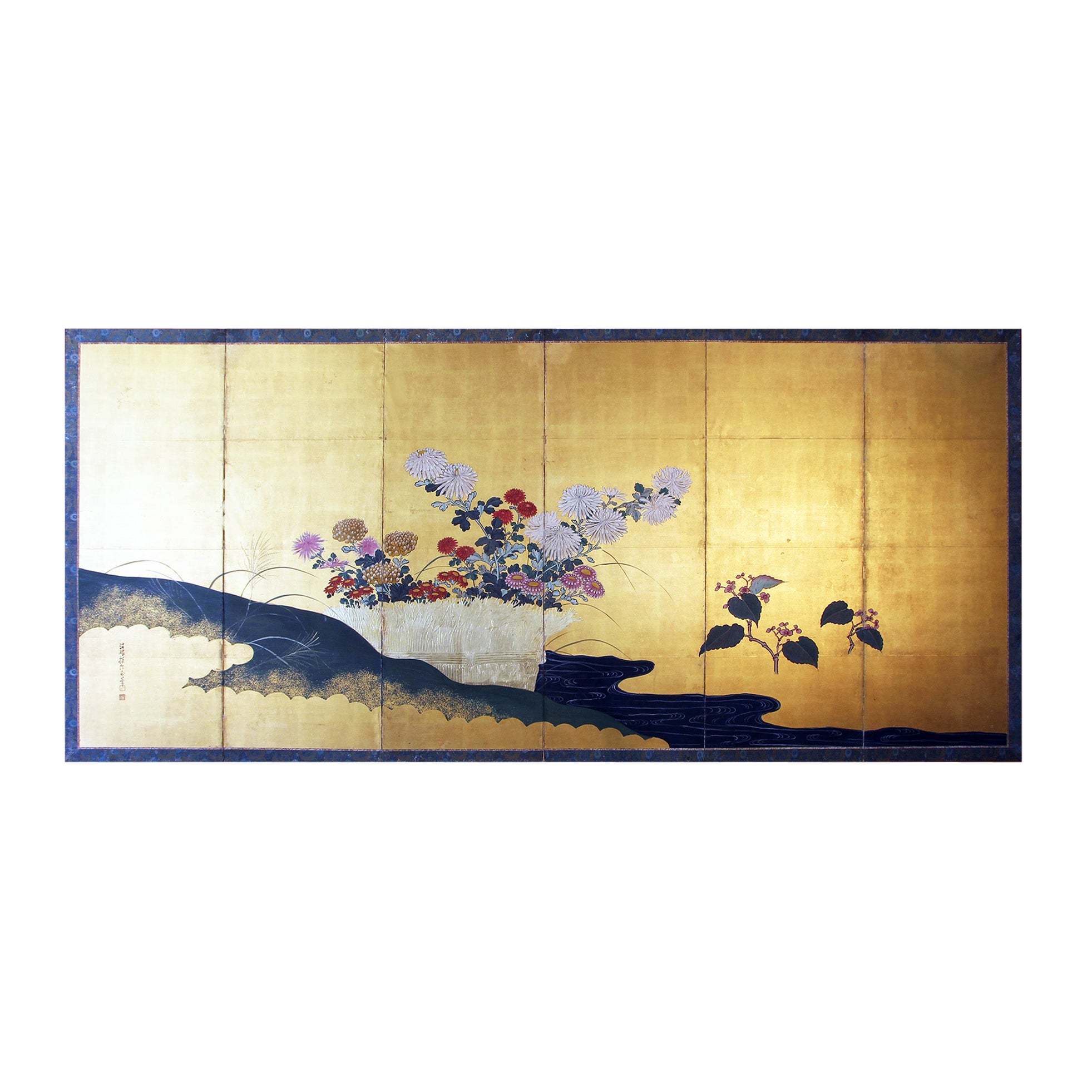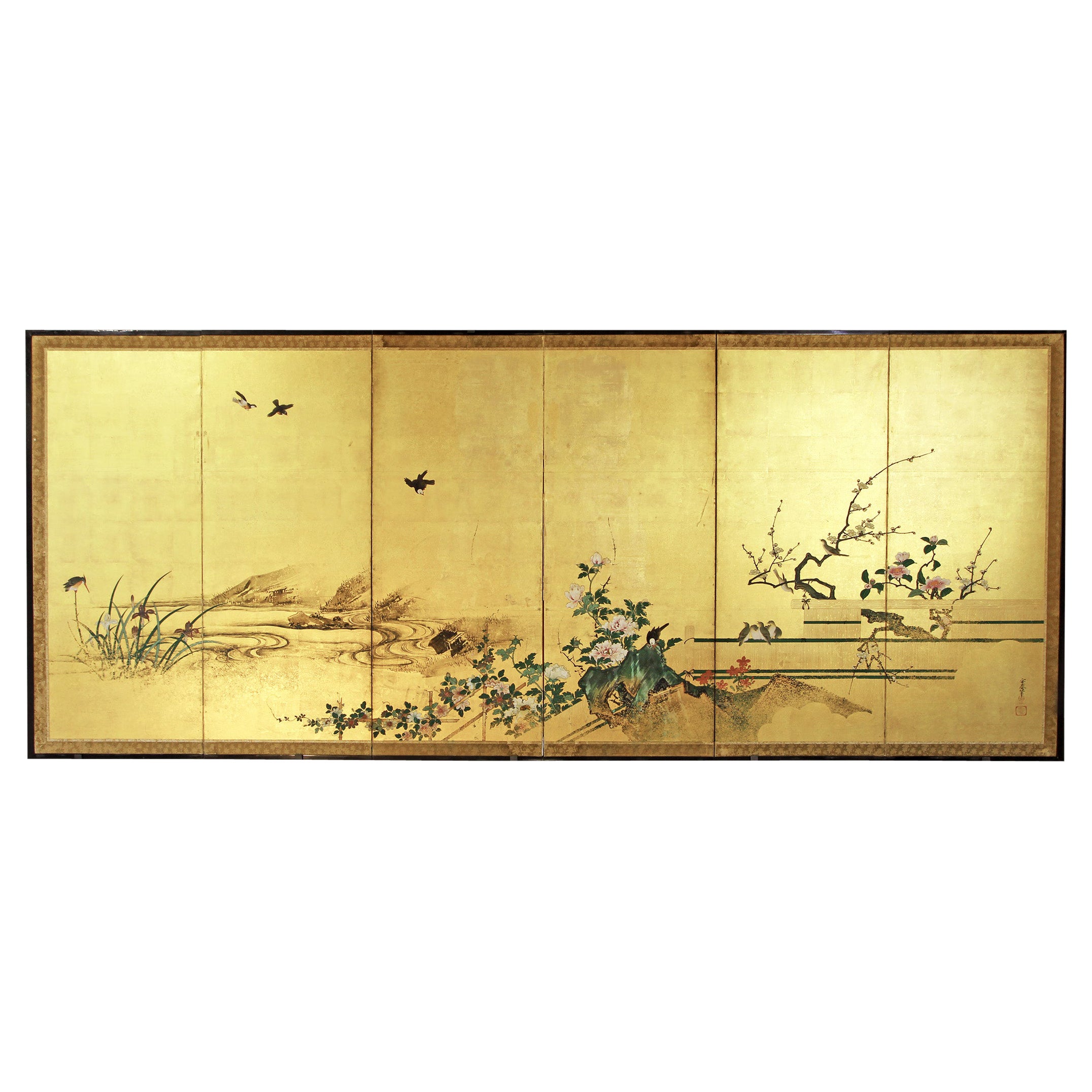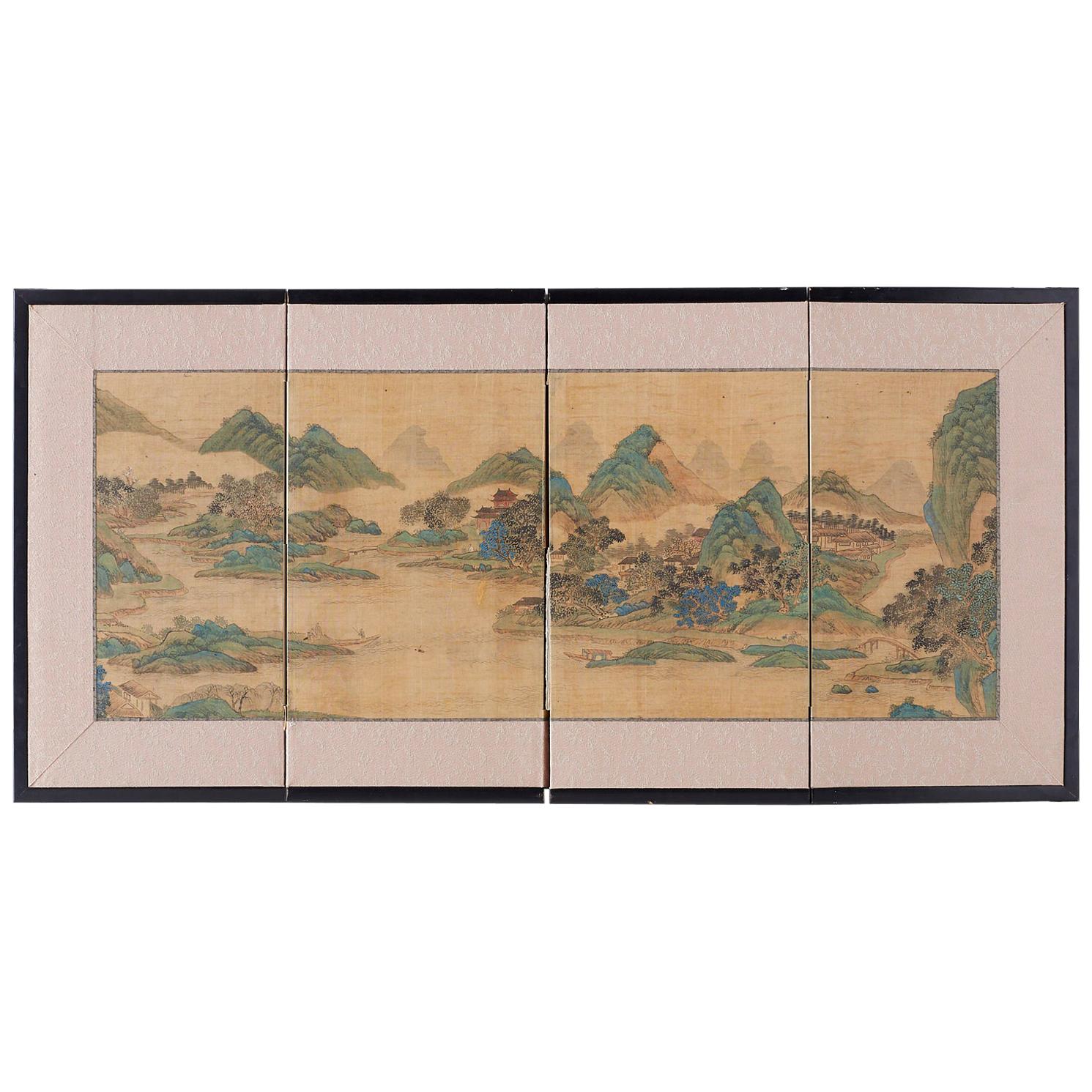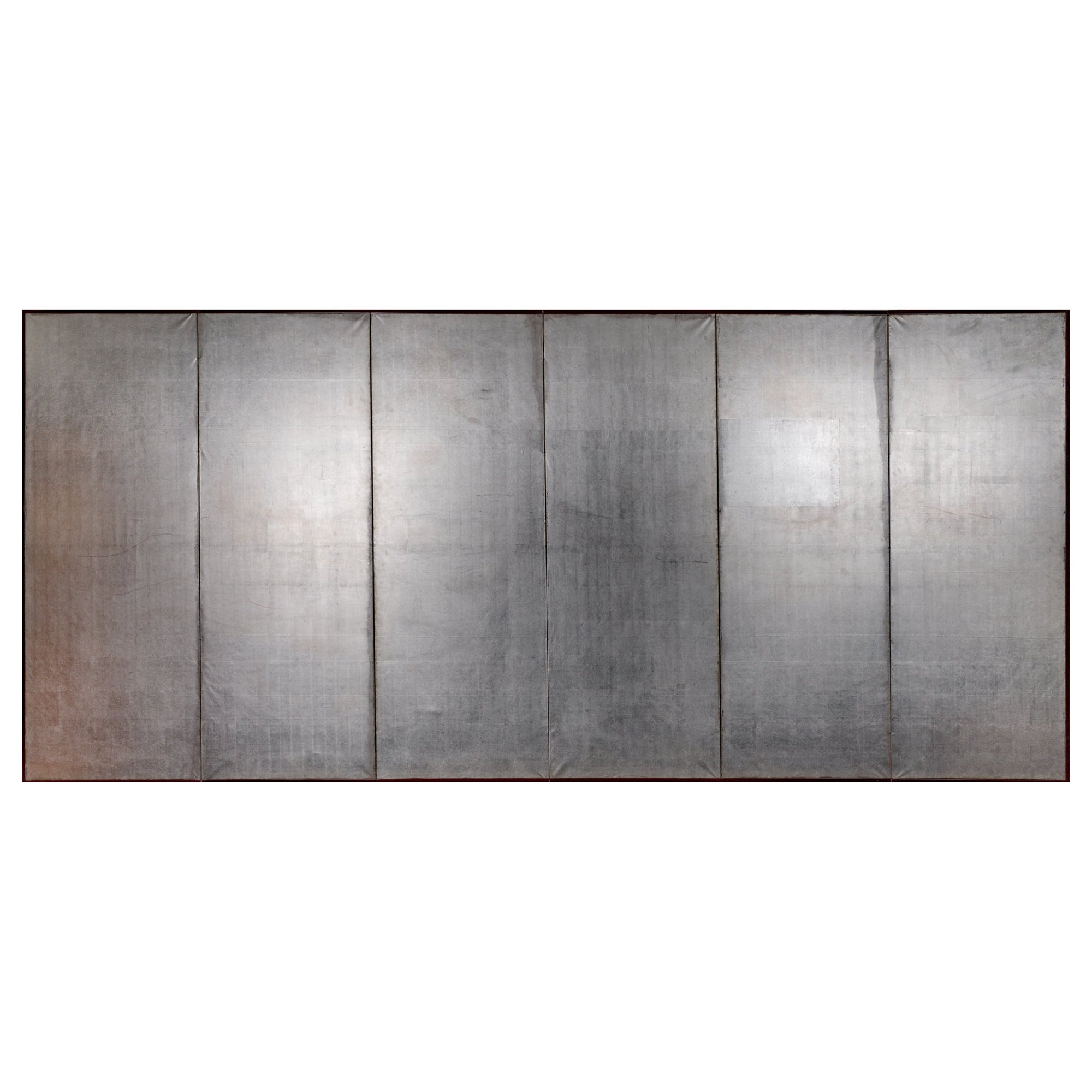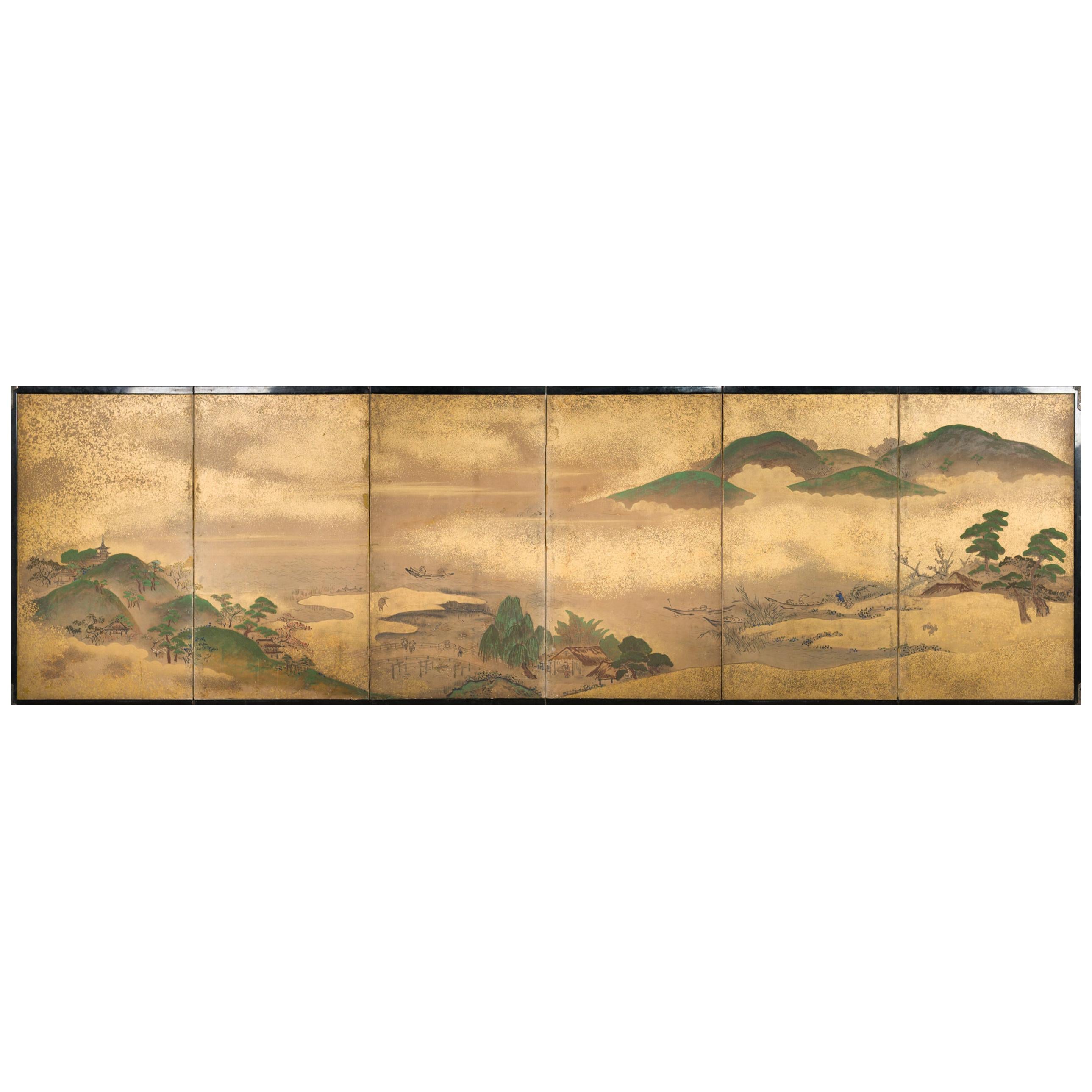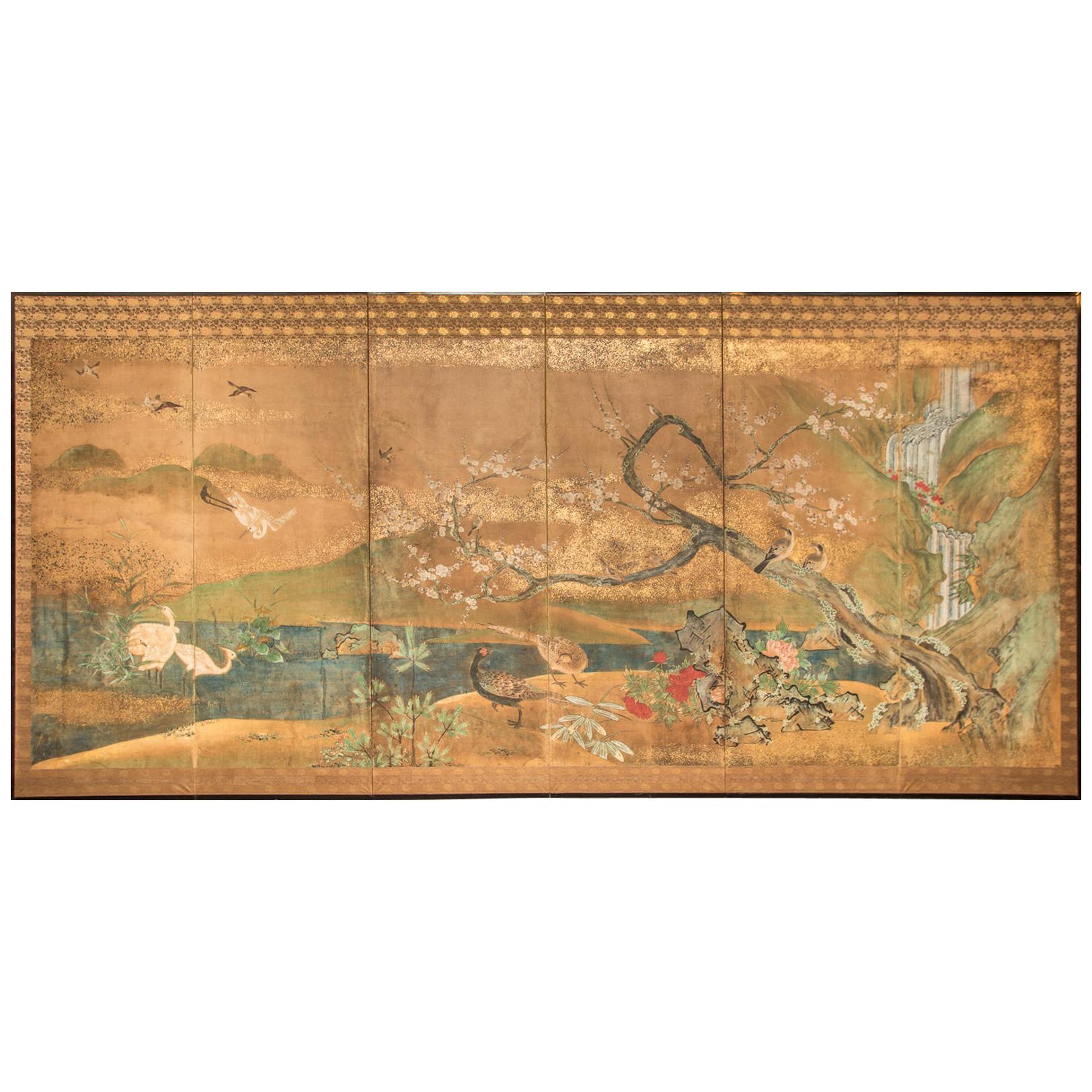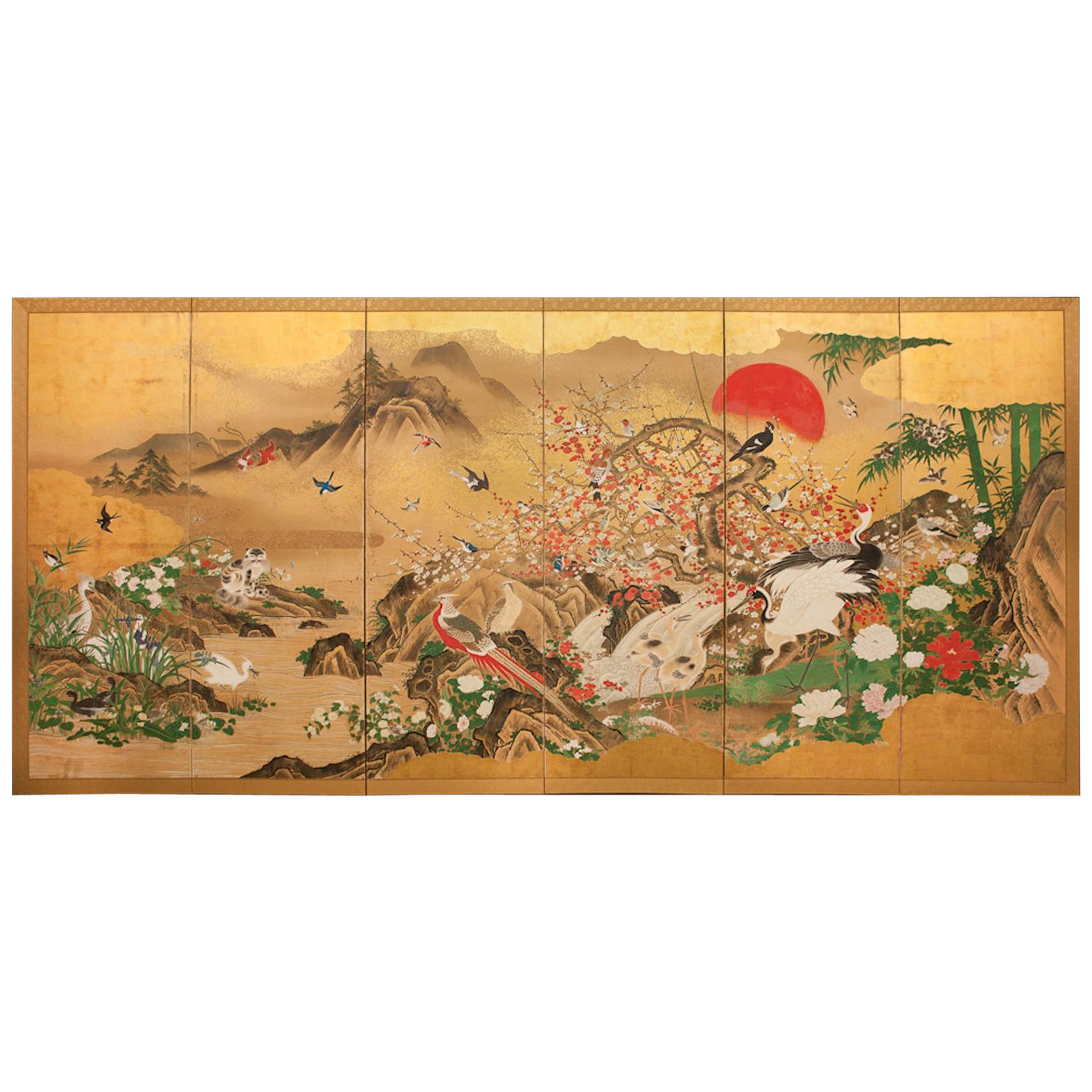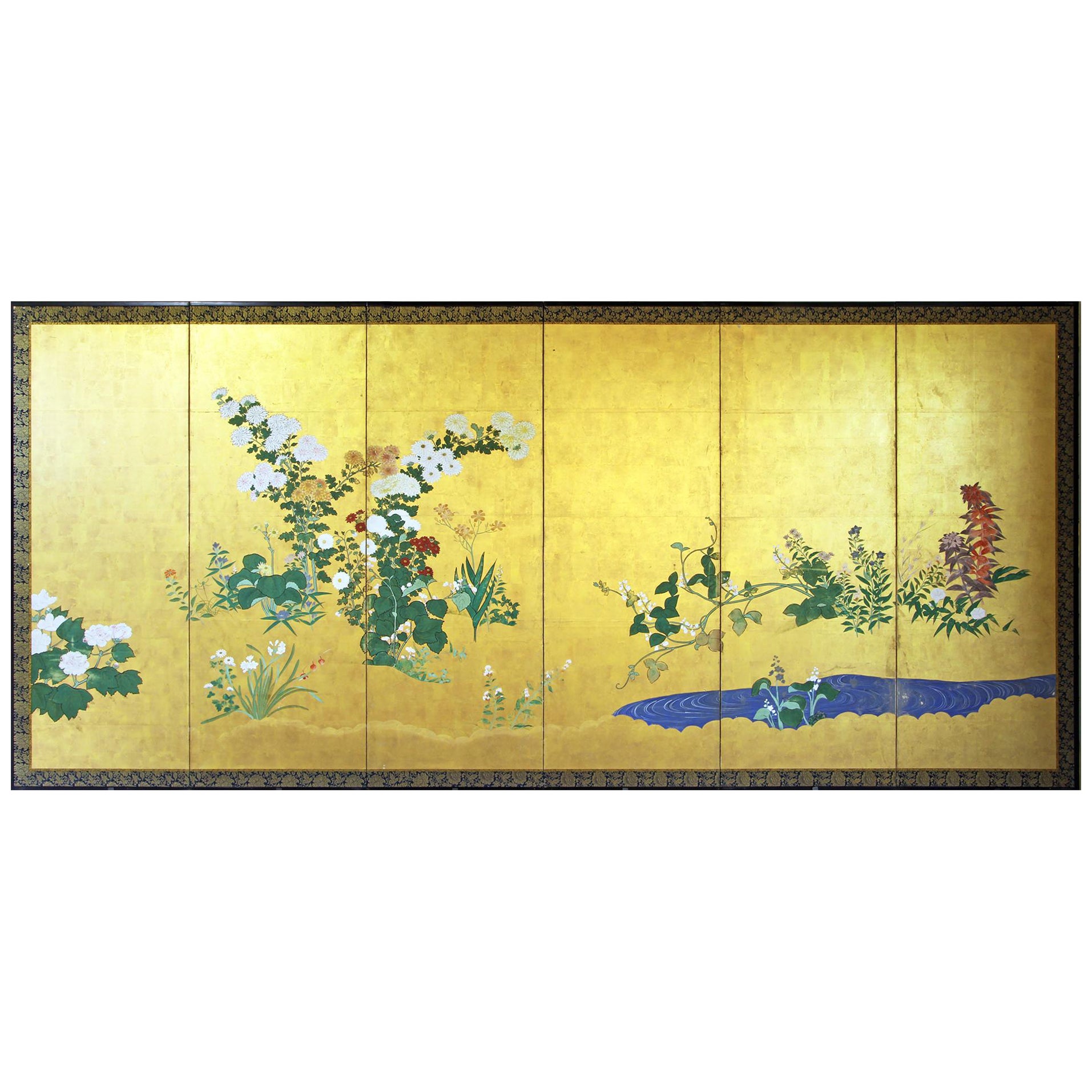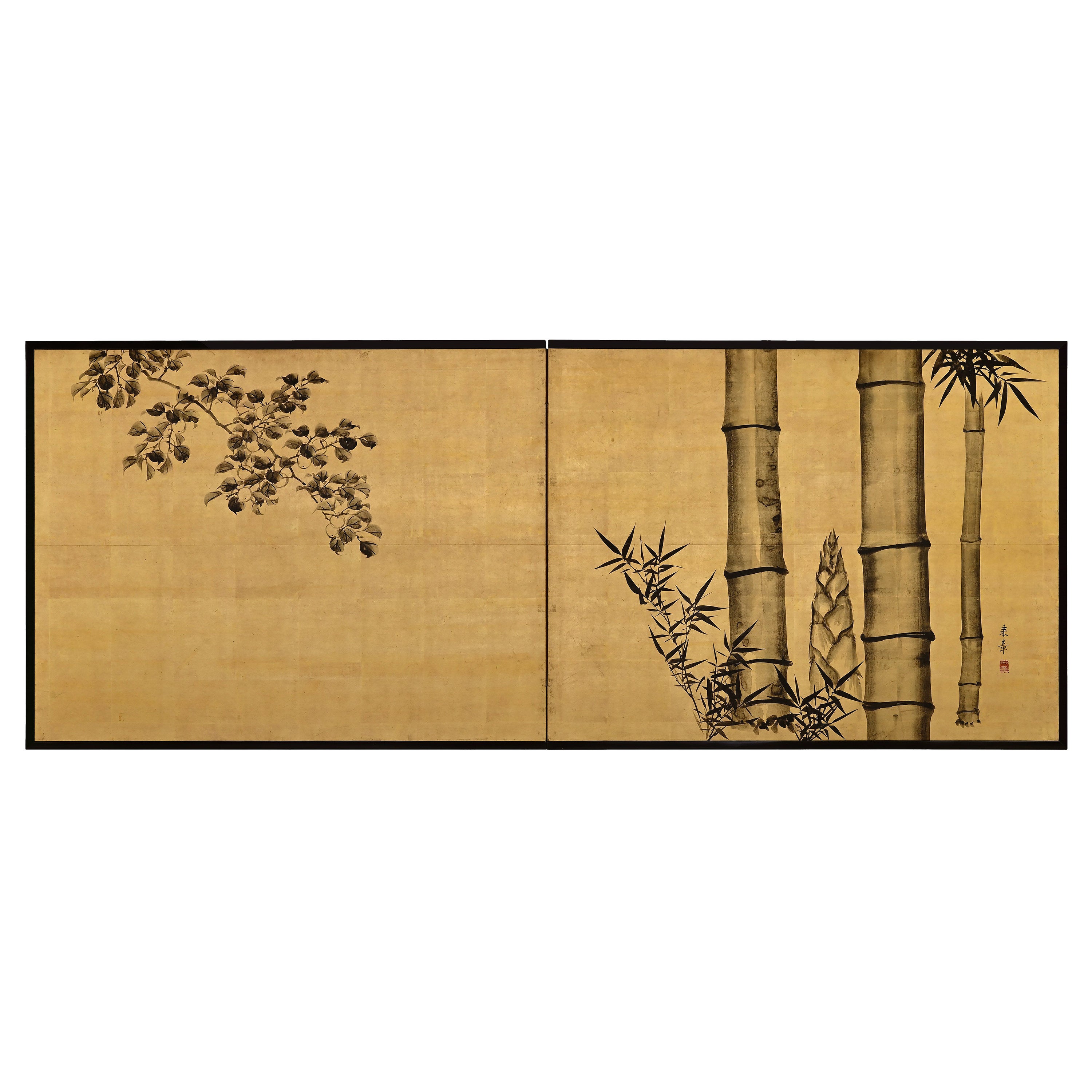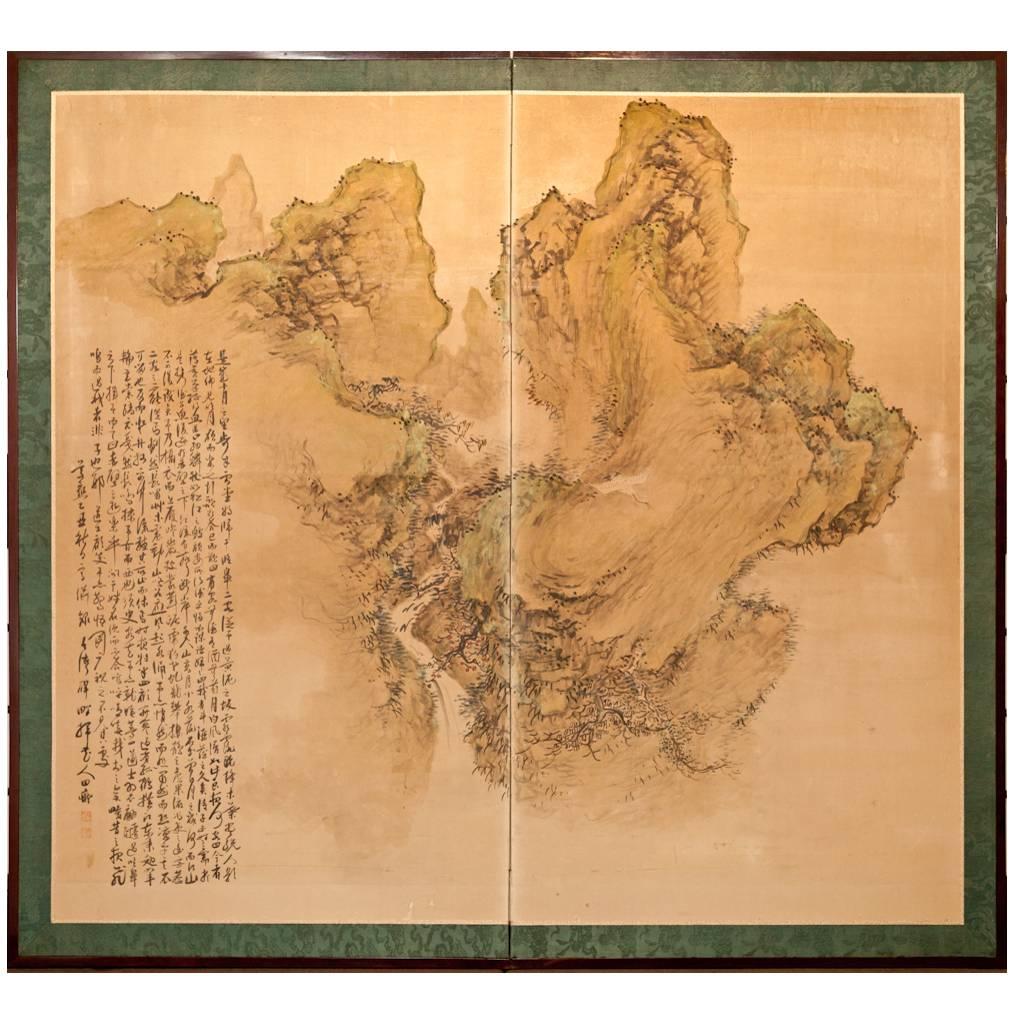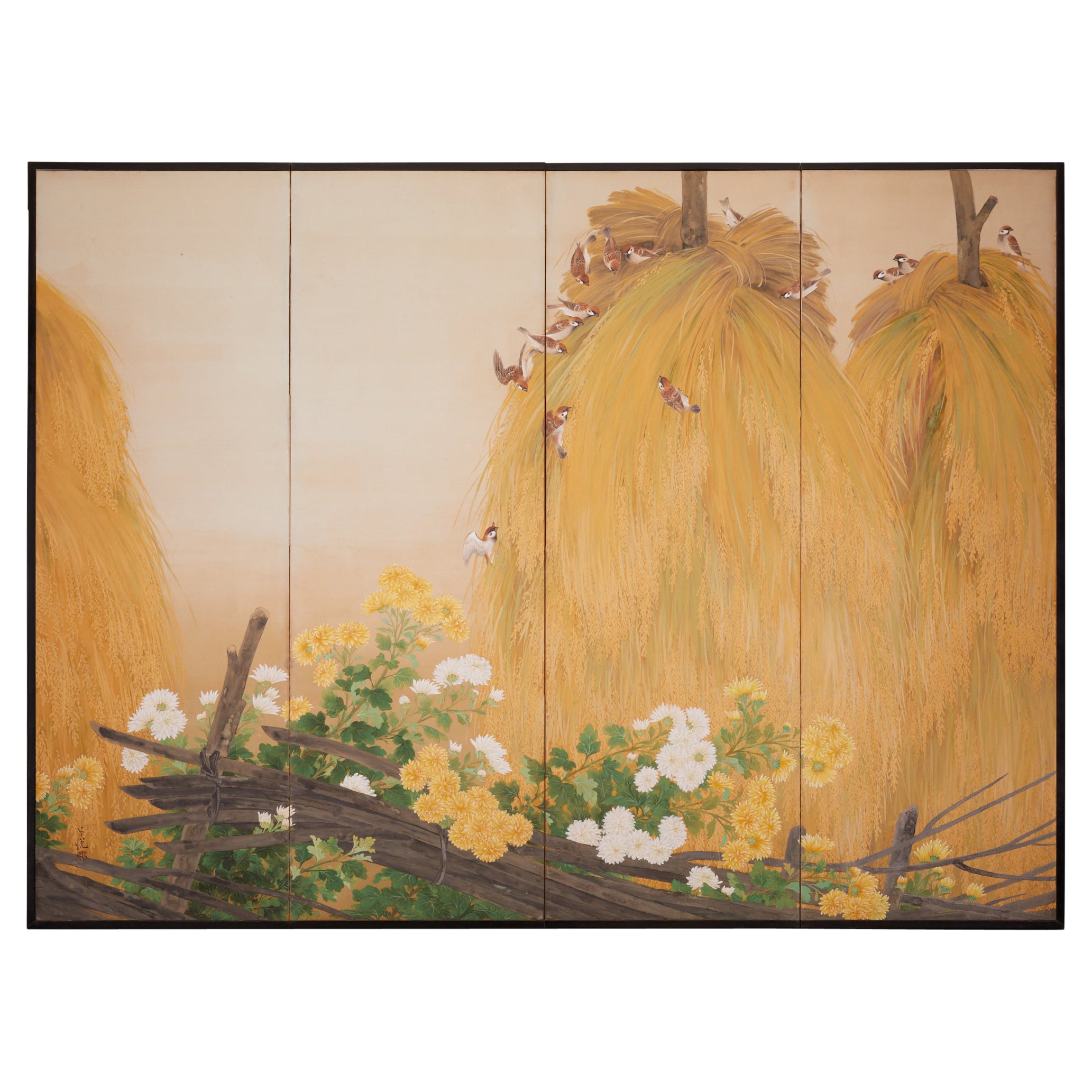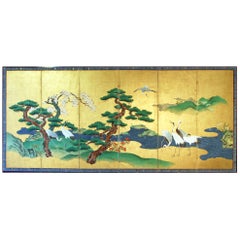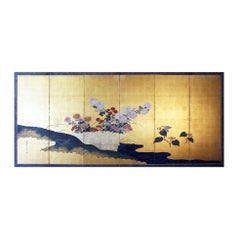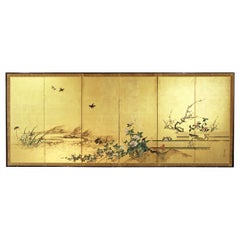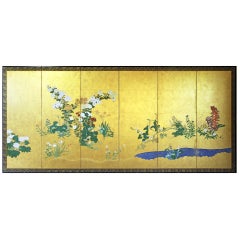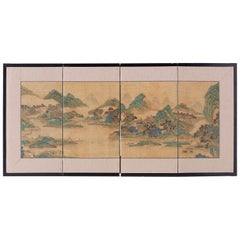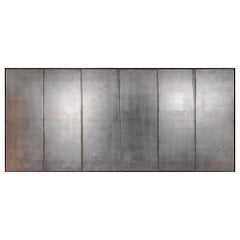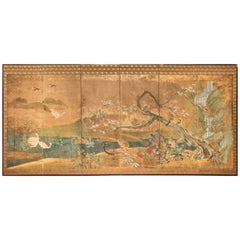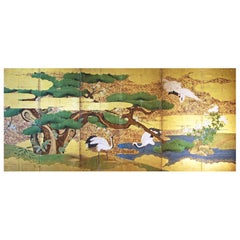
Japanese Landscape Folding Screen Rice Paper and Gold Leaf
View Similar Items
Want more images or videos?
Request additional images or videos from the seller
1 of 7
Japanese Landscape Folding Screen Rice Paper and Gold Leaf
$15,372.62List Price
About the Item
- Dimensions:Height: 0.79 in (2 cm)Width: 115.75 in (294 cm)Length: 0.79 in (2 cm)
- Style:Edo (Of the Period)
- Materials and Techniques:
- Place of Origin:
- Period:
- Date of Manufacture:circa 1820
- Condition:
- Seller Location:Brescia, IT
- Reference Number:1stDibs: LU5628224509412
About the Seller
5.0
Recognized Seller
These prestigious sellers are industry leaders and represent the highest echelon for item quality and design.
Gold Seller
Premium sellers maintaining a 4.3+ rating and 24-hour response times
Established in 1981
1stDibs seller since 2021
20 sales on 1stDibs
Typical response time: 2 hours
Authenticity Guarantee
In the unlikely event there’s an issue with an item’s authenticity, contact us within 1 year for a full refund. DetailsMoney-Back Guarantee
If your item is not as described, is damaged in transit, or does not arrive, contact us within 7 days for a full refund. Details24-Hour Cancellation
You have a 24-hour grace period in which to reconsider your purchase, with no questions asked.Vetted Professional Sellers
Our world-class sellers must adhere to strict standards for service and quality, maintaining the integrity of our listings.Price-Match Guarantee
If you find that a seller listed the same item for a lower price elsewhere, we’ll match it.Trusted Global Delivery
Our best-in-class carrier network provides specialized shipping options worldwide, including custom delivery.More From This Seller
View AllJapanese Folding Screen Six Panels Painted on Gold Leaf
By Japanese Studio
Located in Brescia, IT
Paravento a sei pannelli di scuola giapponese Kano: paesaggio con bellissime ed eleganti gru vicino al fiume, con alberi di pino e sakura.
Dipinto a mano con pigmenti minerali ed inc...
Category
Antique Early 19th Century Japanese Edo Paintings and Screens
Materials
Gold Leaf
Japanese Byobu - Japanese Folding Screen Gold Leaf
By Japanese Studio
Located in Brescia, IT
Floral scene of a "Rimpa School" garden with polychrome chrysanthemum flowers.
Six-panel screen painted with pigments on golden rice paper of good size and well preserved.
Bold color...
Category
Antique Early 19th Century Japanese Edo Paintings and Screens
Materials
Gold Leaf
Japanese Folding Screen Landscape paint on Gold Leaf Six Panels
By Japanese Studio
Located in Brescia, IT
Folding screen depicting a landscape by a painter of the Rinpa school, early 19th century.
Six panels painted in ink on gold leaf and "gofun" on vegetable paper.
Rinpa is one of the ...
Category
Antique Early 19th Century Japanese Edo Paintings and Screens
Materials
Gold Leaf
Edo Landscape Japanese Folding Screen
By Japanese Studio
Located in Brescia, IT
Refined work by a painter from the first half of the 19th century, from the landscape of the "Rinpa" school by a painter from the end of the 18th century, the Rinpa school.
Six panels painted in ink on gold leaf and "gofun" on vegetable paper.
The flowers are made with the "gofun" technique, natural or pigmented white oyster powder.
Rinpa is one of the major historical schools of Japanese painting. The style was consolidated by the brothers Ogata Korin (1658–1716) and Ogata Kenzan (1663–1743).
This folding screen has a very clean design that leaves plenty of room for the beautiful golden landscape.
It comes flat and you can easily hang it with our hooks.
Lucio Morini...
Category
Antique 18th Century Japanese Edo Paintings and Screens
Materials
Gold Leaf
Byobu- Japanese Folding Screen Gold Leaf
By Japanese Studio
Located in Brescia, IT
Japanese six-panel screen from the Kano school: Japanese landscape with an elegant crane.
Hand painted with mineral pigments and gold leaf inks.
The pure gold leaf is laid with great...
Category
Antique Late 19th Century Japanese Meiji Paintings and Screens
Materials
Gold Leaf
Japanese Screen mid Edo gold leaf
By Japanese Studio
Located in Brescia, IT
This 18th century six-panel screen is truly special. The author is unknown, but his singular genius in portraying dozens of chrysanthemum flowers created with the white of the "gofun...
Category
Antique Mid-18th Century Japanese Edo Paintings and Screens
Materials
Gold Leaf
You May Also Like
Japanese Miniature Four-Panel Screen Blue and Green Landscape
Located in Rio Vista, CA
19th century mid-Edo period Japanese four-panel miniature screen. Depicting a beautifully painted Chinese blue and green landscape in the Nanga School...
Category
Antique 19th Century Japanese Edo Paintings and Screens
Materials
Brass
Japanese Six Panel Screen: Plain Silver Leaf on Paper
Located in Hudson, NY
(no image) With beautiful oxblood color lacquer frame with 19th century bronze mounts.
Category
Early 20th Century Japanese Paintings and Screens
Materials
Bronze, Silver Leaf
Japanese Six Panel Screen: Rolling Country Landscape
Located in Hudson, NY
A mid-sized six panel screen. Edo period (c. 1800) painting of a landscape features a temple on the mountain top, a river with fishermen emerging from gold...
Category
Antique Early 19th Century Japanese Edo Paintings and Screens
Materials
Gold Leaf
Japanese Six-Panel Screen Waterfall and Cherry in Audubon Landscape
Located in Hudson, NY
Japanese six-panel screen: waterfall and cherry in Audubon landscape, Edo period painting, 18th century, depicting summer and spring. A Kano Schoo...
Category
Antique Mid-18th Century Japanese Edo Paintings and Screens
Materials
Gold Leaf
Japanese Screen: Animals and Flowers in a Landscape with Rising Sun
Located in Hudson, NY
Edo period (c. 1800) screen, beautifully painted with excellent details. Kano School painting at its best. An exuberant Audobon landscape being observed by a cat and her kitten. A...
Category
Antique Early 19th Century Japanese Edo Paintings and Screens
Materials
Gold Leaf
19th Century Japanese Screen for Tea-Ceremony, Ink Bamboo and Plum on Gold Leaf
Located in Kyoto, JP
Three Friends of Winter
Nakajima Raisho (1796-1871)
Late Edo period, circa 1850
Ink and gold leaf on paper.
This is a double-sided Japanese Furosaki or tea-ceremony screen from the mid 19th century; bamboo and plum on the front, young pines the back. It by Nakajima Raisho, a master painter of the Maruyama school in the late Edo and early Meiji periods. In this work Raisho combines exquisite ink brushwork with large open spaces of brilliant gold-leaf to inspire the viewers imagination. Rather than naturalism, he is searching for the phycological impression of the motifs, resulting in abstraction and stylization. His simplification of the motifs the result of looking to capture the inner nature of the objects. This art motif is known as Sho Chiku Bai, or the Three Friends of Winter. Evergreen pine connotes steadfastness, bamboo suggests both strength and flexibility, while plum blossoms unfurling on snow-laden branches imply hardiness. Combined, this trio is emblematic of Japanese new year. Chinese literati were the first to group the three plants together due to their noble characteristics. Like these resilient plants flowering so beautifully in winter, it was expected of the scholar-gentleman to cultivate a strong character with which he would be able to show the same degree of perseverance and steadfastness even during times of adverse conditions.
The screen would have been placed near the hearth of a room used for the Japanese tea ceremony, shielding the fire from draughts and also forming a stimulating and decorative backdrop behind the tea utensils. It would have been used in the Hatsugama, or first tea-ceremony of the new year.
Nakajima Raisho (1796-1871) originally studied under Watanabe Nangaku before entering the school of Maruyama Ozui. He was the highest ranking Maruyama school painter at the end of the Edo period and was known as one of the ‘Four Heian Families’ along with Kishi...
Category
Antique Mid-19th Century Japanese Edo Paintings and Screens
Materials
Gold Leaf
Recently Viewed
View AllMore Ways To Browse
Edo Japanese Screen Kano
Japanese Crane Screen
Japanese Screens With Cranes
Gold Leaf Cranes
Gold Screen Crane
Folding Screen With Cranes
Crane Paintings Gold Leaf
Asian Gold Leaf Panels With Cranes
Japanese Six Panel Screen Cranes
Japanese Folding Screen Rice Paper
Asian Silk Paintings Antique
Asian Black Screens
Japanese Silk Paintings
Silk Panel Framed
Japanese Gold Screen
18th Century Screen
20th Century Japanese Silk
Japanese Screens Large
